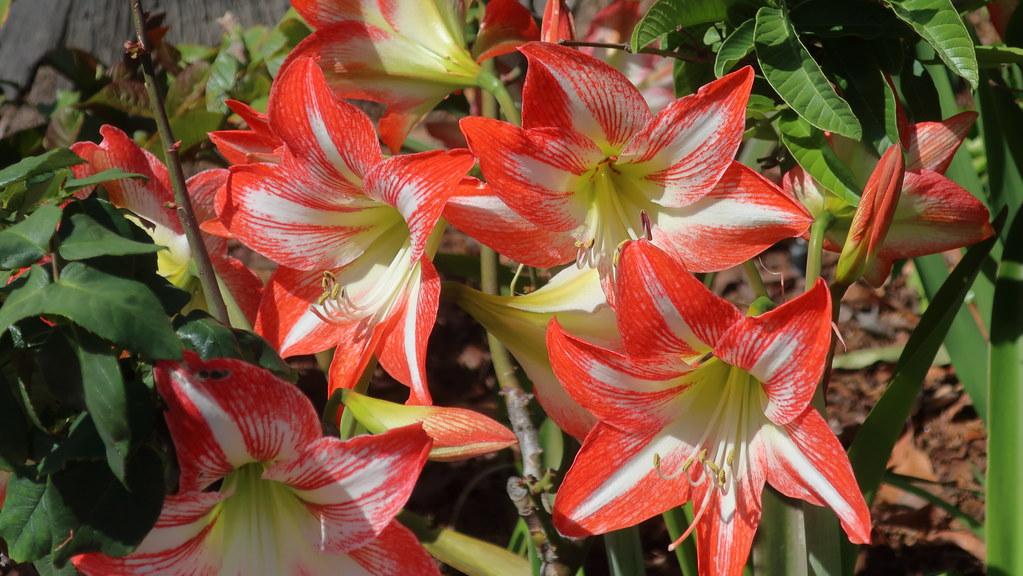
amaryllis
Hippeastrum cvs.
Cycle:
Perennial
Watering:
Average
Propagation:
Seed Propagation
Hardiness Zone:
8
Flowers:
Showy, White, Orange, Pink, Red, Dark-red, Magenta Flowers In Winter
Sun:
full sun only if soil kept moist,part sun/part shade
Fruits:
Fruits In Spring Ready In
Leaf:
Yes
Leaf Color:
green
Growth Rate:
Low
Maintenance:
Low
Tropical:
Yes
Indoors:
Yes
watering
Amaryllis plants require comparatively little water, particularly during dormancy. To keep your amaryllis healthy, water the potting soil of an actively growing plant when the top 1-2 inches of the soil is dry. Generally speaking, water your amaryllis once or twice a week or slightly more often if the weather is particularly warm or the plant is in full sun. Reduce watering when the leaves begin to yellow, and allow the potting soil to dry before watering it again. During dormancy, which usually takes place during the middle of the summer, water the amaryllis only enough to keep the roots and base of the bulb from completely drying out.
sunlight
Amaryllis (Hippeastrum cvs.) plants prefer bright but indirect sunlight. Depending on the variety, a few hours of direct sunlight a day is ideal. To achieve this, provide your amaryllis with around 4 to 6 hours of direct sunlight per day during the morning and afternoon. Make sure the sun is not too intense. In cooler climates, they may need a bit more sun than in hotter climates. You should also avoid placing your amaryllis in direct sun in the middle of the day when the sun is at its strongest.
pruning
Amaryllis should be pruned annually in late fall or early winter. When pruning, cut the entire plant to within 3 or 4 inches of the soil. This will encourage new growth in the spring and help your amaryllis to keep its attractive shape. For additional control, remove any leaves that have browned or wilted, and remove seedpods as soon as they are visible. Removing spent flower stalks will also help keep your amaryllis blooming as long as possible.
